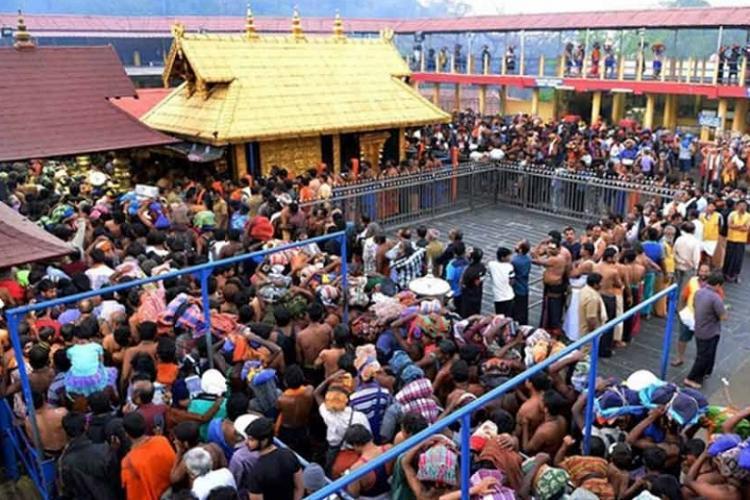
IK ONKAR
It is the symbol that represents the supreme reality, the GOD IS ONE.
Sikhism as a religion arose from Guru Nanak Dev Ji’s vision of the One Ultimate Reality – IK ONKAR. In the troubling and gloomy times of the 15th century, when religious inequality darkened the minds and lives of the people, Guru Nanak Dev Ji, with his divine ideology and philosophy, succeeded in uniting the two predominant religions of India, Hinduism and Islam, and enlightened the whole world. From his efforts to overcome the prejudices of inequality, Sikhism emerged.
To maintain the faith after his death, Guru Nanak Dev Ji chose Angad as his successor. Guru Angad Dev Ji was later succeeded by Guru Amardas Ji. In 1569, Guru Amardas Ji asked his follower Bhai Jetha to accompany him to a place about 25 miles from Goindwal. Guru Ji wanted to build a new city there and call it Amritsar, where the supreme master would reside, and build a sacred water tank (Santokhsar/Tank of Satisfaction) in the area surrounded by sheesham trees.
On his instructions, Bhai Jetha acquired the land for Rs 700 Akbari. Guru Amar Das Ji laid the foundation stone for the city in 1570, initially constructing a building called GURU KA MAHAL or House of the Guru. On August 30, 1547, Guru Amar Das elected Bhai Jetha as his successor and blessed him with the name Guru Ram Das. Guru Ram Das Ji continued the construction work and the devotees, moved by love for their Guru, came from near and far to join in the work. Excavation and Exploration of Amritsar and Santokhshar was completed by 1577.
It is rightly mentioned in Shri Guru Granth Sahib Ji that,
“RAM DAS SAROVAR NAHTE
SAB UTRE PAP KAMATE”
which means, that whosover baths in the Sarovar of Guru Ram Das, gets freed from the burden of the sins he has committed. And even today, millions of devotees take bath in this pool of nectar to gain freedom from the burden of sins they have committed.
In 1581, Guru Arjan Dev Ji initiated the construction of the Gurdwara. The foundation stone was laid by Mian Mir, a muslim saint and Guru Ji’s close friend. It took 8 years for the construction of the first version of the gurudwara to complete. This belief is however unfounded as according to traditional sikh sources, it was laid by Guru Ji himself.
On 16 August 1604, Guru Arjan Dev Ji completed the expandition and compilation of the first version of the Sikh scripture and erected a copy of the Adi Granth in the gurdwara. He appointed Baba Buddha as the first Granthi.
In 1802, Maharaja Ranjit Singh announced that he would renovate the gurudwara and rebuild it in gold and marble. The Gurudwara was renovated in marble and copper in 1809, and in 1830 Ranjit Singh donated gold to overlay the sanctum with gold leaf.
“DITHE SABE THANV NHI TUDH JEHEYA”
Meaning: I HAVE SEEN ALL PLACES, BUT NONE CAN COMPARE TO YOU.
Mentioned in the sacred Shri Guru Granth Sahib (the holy book of the sikhs), this metaphysical verse describes the spirituality, blessedness and saintliness of the Harmandir Sahib.
Gurudwara Shri Harmandir Sahib (Hari Ka Mandir or abode of God), also known as Darbar Sahib (exalted court/sacred audience) and famously, Golden Temple all over the world, is a Gurudwara located in the city of Amritsar, Punjab, India. It is a preeminent spiritual and transcendental site of Sikhism. It is the eternal beacon of faith for the sikhs.
The story of the Darbar Sahib is the story of Sikhi; glittering in glory and radiant beauty, non-stop reverberation of Guru’s Kirtan, soft-heartedness in its service to mankind and an unexplainable pull for anyone seeking serenity on earth.
As one steps on the blessed entrance of Harmandir Sahib, and the gurudwara comes to one’s sight, it feels as if we lay in god’s feet. One’s head automatically bows in devotion and respect and “DHAN DHAN GURU RAM DAS JIN SIRIYA TINE SAVARIYA” utters from the mouth. As one does the parikarma of the gurudwara complex, he gets the Darshan of the following structures:
* Akal Takhat and Teja Singh Samudri Hall: Akal Takhat is the chief Takht, a centre of authority in Sikhism. It means “Throne of the Timeless (God)”. The Teja Singh Samundri Hall is the office of the SGPC. The twin Nishan Sahibs fluttering before the Akal Takhat are linked by the shield and crossed swords. They symbolise Meeri-and-Peeri.
* Ramgarhia Bunga and Clock Tower : The Ramgarhia Bunga remains a symbol of the Ramgarhia Sikh community’s identity, their historic sacrifices and contribution to defending the Golden Temple over the centuries. The Clock Tower did not exist in the original version of the temple. In its location was a building, now called the “lost palace”.
* Ber Sahib (trees): The Golden Temple has numerous trees around the pool. One of them is the Laachi Ber, believed to be the one under which Guru Arjan rested while the temple was being built. The third one is called Dukh Bhanjani Ber. It is believed in the Sikh tradition that this tree was the location where a Sikh was cured of his leprosy after taking a dip in the pool, giving the tree the epithet of “suffering remover”.
* Gur Ram Das Langar Hall : Food is served here to all visitors who want it, regardless of faith, gender or economic background. Vegetarian food is served and all people eat together as equals.
There are several rites performed everyday in the Golden Temple as per the historic Sikh tradition. These rites treat the scripture as a living person, a Guru out of respect. They include:
* Sukhasan : At night, after a series of devotional kirtans and ardaas, the Guru Granth Sahib is closed, carried on the head, placed into and then carried in a flower decorated, pillow-bed palki (palanquin), while doing Simran of Waheguru. The palki sahib is carried to Guru Ji’s bedroom in the Akal Takht. Once it arrives there, it is placed on a bed.
* Prakash: About dawn everyday, the Guru Granth Sahib is taken out its bedroom, carried on the head, placed and carried in a flower-decorated palki with chanting and bugle sounding across the causeway. It is brought to the sanctum. Then after the Divine Kirtan of Asa Di Var and Ardas, a random page is opened. This is the mukhwak of the day, it is read out loud, and then written out for the pilgrims to read over that day.
As Karminder Sahib Dhillon has said, “The Darbar Sahib is the centre of the universe of Sikhism; distinctive in its existence, unique in its function, matchless in its form, inimitable as a representation of Sikhism and above all, only one of its kind, even in name”.
Whenever I visit this divine place, my soul becomes immaculately pure. All the evil and negative thoughts automatically vacate from mind and heart and the spiritual word “WAHEGURU” echos repeatedly in the mind. It is said that Guru Ram Das Ji, himself, resides in Harmandir Sahib, and this belief gets stronger as one visits this place. It is also beleived that at this place, if faith is held high then the sick get cured of their illnesses and all the affairs of the people get resolved.
Summarizing all the points in the praises of Harmandir Sahib, the least I can say is:
“Ram Das Guru Ne Amritsar Sheher Basaya,
Guru Arjan ne Hari Ka Mandir, Harmandir Usarya,
Logo ne kaha ki Ram Das Sarovar Ke beecho beech Guru ka Mahal Saja Hai,
Har Ka Ghar sab ke liye humesha khula Hai,
Anand chaya jag Mai,
Jab Ranjit Singh ne Harmandir ko Swarn Mandir kehelvaya,
Hai Yeh Darbar Sahib,
Darbar Sach ka
Darbar Nyaya Ka
Darbar Dharam ka
Darbar Insaaf ka
Darbar Pyaar aur apnepan ka
Hai yeh Darbar mere Guru Ram Das Ka”
By: PRABHGUN KAUR
Write and Win: Participate in Creative writing Contest & International Essay Contest and win fabulous prizes.


